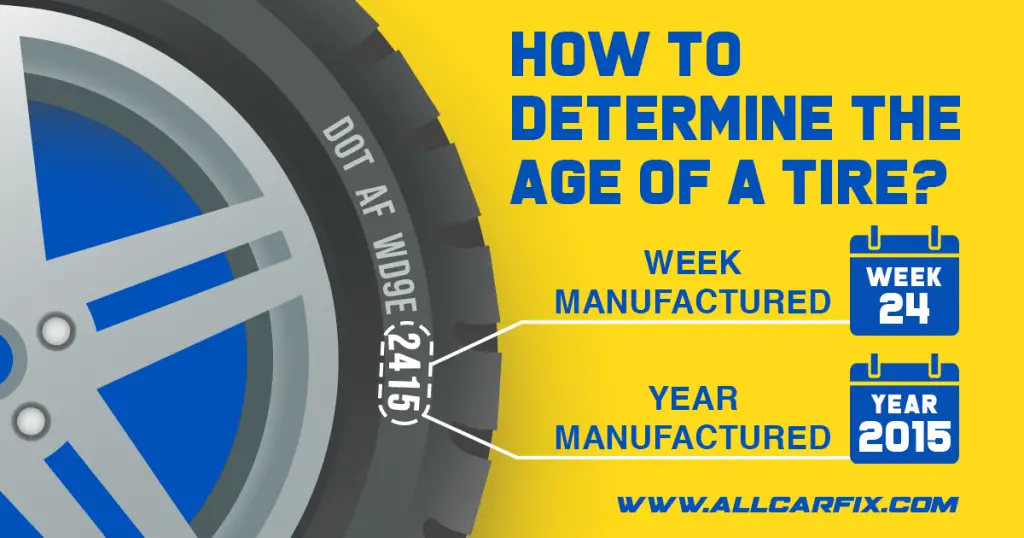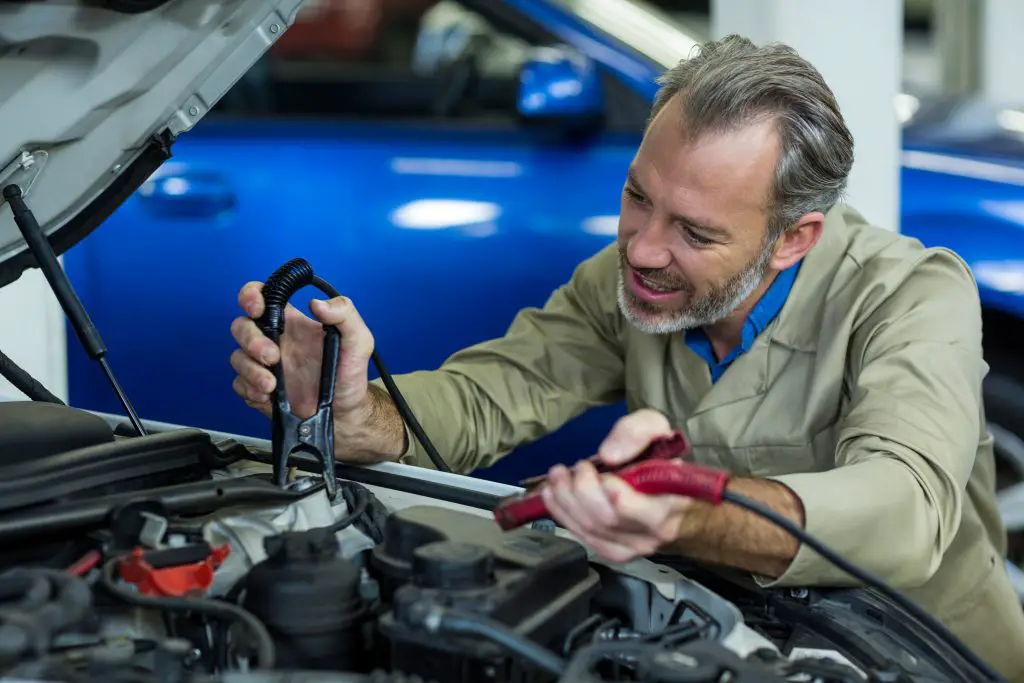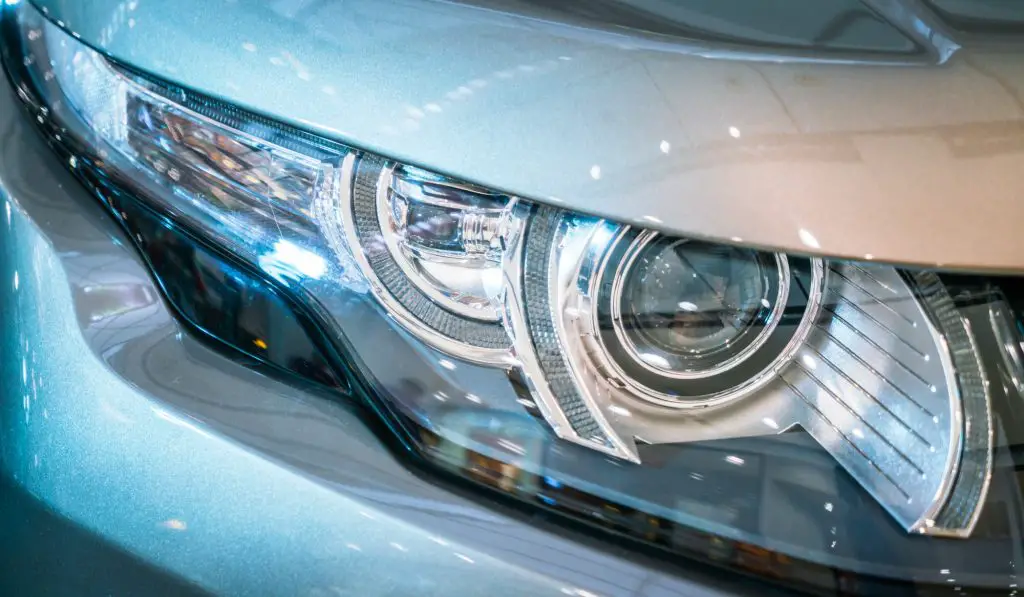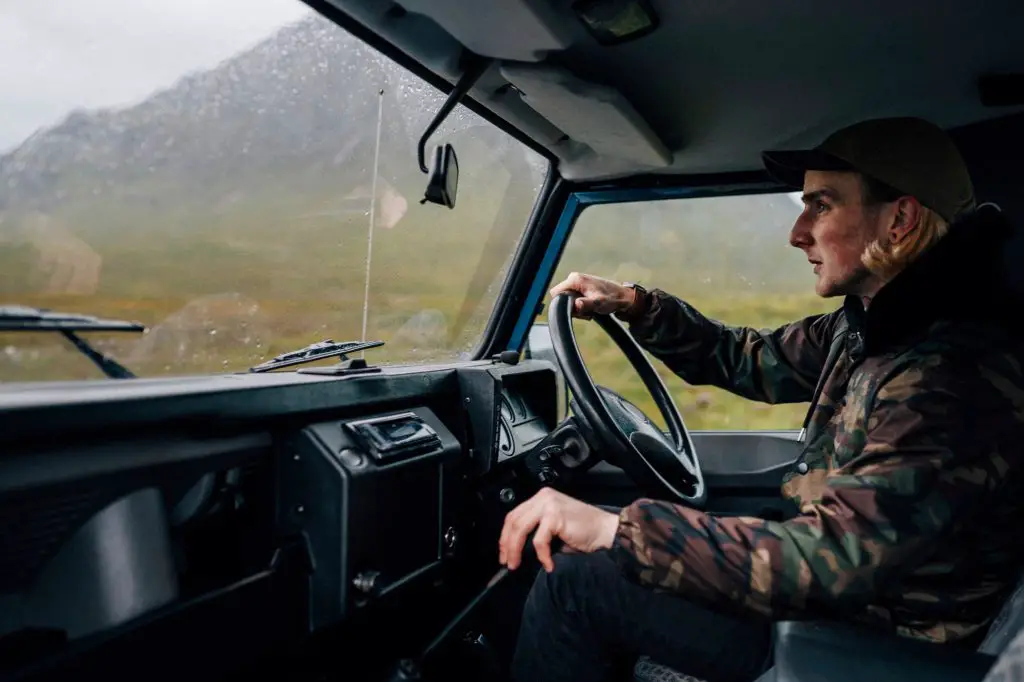This post is a comprehensive guide for new and experienced car owners about car repair and maintenance. Your car is a thousand-dollar worth of an asset. As much as you want to keep it pristine, it is subject to wear and tear.
As a car owner, you should expect that a car will always require repairs and maintenance if you wish to keep them running at its best. Aside from that, did you know that a detailed vehicle maintenance history increases its resale value?
Here are the top 10 basic car repairs and maintenance that every car owner should know.
Everything you need to check regularly
Remember that these car maintenance tips may cause you a few hundred bucks, but overlooked problems will cost you thousands of dollars. That is why maintenance is essential. So here are the top car maintenance items that you show know about:
1. Changing Engine Oil

Engine oil is probably the most crucial aspect of vehicle maintenance you should keep your eye on. It lubricates and protects the engine and its parts from wear and tear. However, engine oil gets dirty over time. How often should changing engine oil be done?
That is the most common question. Well, it depends on mileage and the oil you use. Sometimes environmental condition also plays a role. The average interval to change engine oil is between 3,000 to 5,000 miles.
Moreover, cars using fully synthetic engine oil can go up to 15,000 miles at intervals. Proper intervals in changing engine oil are crucial. Modern cars today have engine oil level monitors installed. This will prompt you to change the engine oil light. This is a great guide, especially for new car owners.
However, checking the actual oil level and quality is still the most accurate method to determine if you need to change engine oil soon.
Related: Clean vs Dirty Engine Oil Comparison
Benefits of changing oil
You must change your engine oil following a proper schedule to keep your car running smoothly. Always refer to the manual in terms of the maintenance schedule. Engine oil and the oil filter need to be changed regularly because bits of metals and dirt end up in the oil while the engine is running. These impurities can cause excessive wear on the engine parts. Changing your engine oil will get all the debris and prevent any damage.
What are the other benefits of following a scheduled oil change? You can expect better fuel mileage if you change it on time. Because by removing the dirty oil and all the debris, it will minimize friction. Friction causes poor engine fuel economy as well as degraded performance. A regular oil change will also help you pass an emissions test.
The engine oil level should also be checked regularly. A good rule of thumb is to inspect it twice a month or before a long weekend drive. Avoid waiting for the change engine oil light as check your dipstick to know if you need to change oil soon.
Related: Can You Mix Fully Synthetic With Semi-Synthetic Oil?
2. Tire maintenance
Tires are the only contact between the car and the road, so it is highly recommended to check them regularly. You should do this for your own safety and for other motorists. This section provides practical tips for maintaining your tires.
The condition of your tires affects handling, ride quality, braking, and overall safety. The first tire care tip is checking tire air pressure. It is measured in pounds per square or more commonly known as PSI.
Recommended PSI
Correct inflation pressure (psi) results in the best tire performance, safety, and fuel savings. Using an accurate tire pressure gauge, check your tire pressure while they are cool at least once a month or before any long trip. New cars have a built-in tire pressure monitoring system. In this case, the tire inflation light on your dashboard will warn you if one of your tires is underinflated or overinflated.
Did you know that incorrect tire pressure is a common cause of uneven tire wear?
The recommended pressure indicated on the manual is usually from 30 and 35 PSI. Tire pressure can be affected by a lot of factors. For instance, temperature could affect tire inflation. The air in your tire will take up more volume should the temperature increase. Likewise, tire pressure would drop when the temperature plunges.
Did you know that this information can also be found on the sticker inside your door? You should also check for any signs of damage and its general condition at least once a month. And always bring an accurate tire gauge and the best portable tire inflator every time you travel.
When should I replace my tires?

Did you know that every tire has a code that indicates its manufactured date? Tire manufacturers use a four-digit code to designate the Date of Manufacture of each tire. The first two numbers identify the week, and the last two numbers identify the year of manufacture. The example above (DOT AF WD9E 2415) 24 indicates the tire was made in the 24th week of the year. The 15 number indicates it was made in 2015.
If you know how to read the age of your tires, then it will be easier to answer the question: When should I replace my tires? Generally, car tires should be replaced between six years to ten years. There are other factors you should consider, including your driving habits and the weather conditions in your place. In case your tire is still in good shape but is 6 to 10 years old, consult a tire shop to have it checked.
Finally, to get most of your tires’ lifespan, make sure to rotate your tires regularly (every 8000 miles). Tire rotation ensures that the tires wear evenly and therefore last longer. If a tire wears out faster than the other three, you must replace one or two tires instead of all four at once. Tire rotation is not difficult, but it should be done correctly.
3. Batteries
Aside from mechanical parts, your car also needs a battery to start. Have you ever searched for car batteries to last how long? Getting stuck in the middle of nowhere because of dead batteries is a nightmare. So, ensure that the car batteries installed have enough juice and are in perfect condition. The batteries are also vital to the electrical system of your car. The electrical system provides safety features and makes your ride more comfortable. Make sure that your batteries are in excellent condition.
How long do batteries last?
On average, a car battery lasts about three years. This, however, depends on how well you take care of it. The weather also matters with batteries. The liquid electrolyte solution is often affected by hot or cold temperatures. You should do a routine battery check at least once a month to maintain its best performance.
Always check the clamps if they are safely secured with lead wire contacts. Make sure the battery is always clean and dry. Never apply grease on your clamps. You can use Vaseline or petroleum jelly to clamps and terminals. You should also learn how to test car battery voltage.
Eventually, car batteries die and need replacement. Luckily some signs will let you know that your battery is failing. The most common symptom is the slow cranking during startup. It means your battery cannot provide enough juice to fire up the engine. However, other components can cause an almost exact issue. On most cars, a battery warning light prompts you that your battery needs attention.
Finally, other electrical components randomly stop working when you have a dying or dead battery. When this happens, you need new car batteries installed.
4. Car Fluids
Your car requires other fluids to function aside from fuel and engine oil. These include coolant, brake fluid, power steering fluid, transmission fluid, and the windshield washer. If these fluids dried up or became dirty, your car could end up damaged. Just like the engine oil, their level should also be checked regularly.
Now you may be asking how often you should change car fluids. The answer is that it depends on which fluid you are referring to. Changing fluids is a top priority in car repair and maintenance since it affects different systems in the car.
Recommended intervals
Transmission fluid –Most carmakers recommend replacing it every 30,000 to 60,000 miles or every three years.
Coolant – Coolants should also be changed every 30,000 to 60,000 miles.
Brake fluid – Make sure to change brake fluid every 2 to 3 years or 24,000 to 36,000 miles, whichever comes first.
Power steering – should be replaced every 750,000 to 100,000 miles or every two years.
Always consult the manual and read about its recommendation. Every make and model differs regarding the interval of changing fluids. Here are some tips as well as warnings in terms of changing fluids. When checking the levels, ensure you are on level ground to get accurate measurements.
These fluids cannot be used interchangeably. For example, using brake fluid for power steering can damage your steering pump, master cylinder, and other expensive components.
Moreover, always check the required specifications. Before opening the cap and pulling the dipstick, check the surrounding area for any dirt and residue. Wipe them with a clean rag to avoid dirt from getting inside that may cause damage.
5. Brakes
At least once a year, your car brake maintenance should be checked to remain safe on the road. The brake pad replacement is the most common car repair and maintenance item in brake maintenance. Brake pads hold the brake rotor and create friction. It creates heat in the process, and over time it wears away, and the brakes start to squeak. Schedule a routine check based on the guide. Also, check the rotors for uneven pad wear, scratches, rust, and pits.
As mentioned earlier, keep the brake fluid cylinder full. This avoids putting strain on the master brake cylinder and other parts. Newer cars have a dedicated dashboard light for the brake. You may see the brake light on your dashboard if you have malfunctioning brakes. Check your brakes immediately if you see this warning.
Drive Habits
Avoid any bad driving habits that may kill your brakes. When you brake suddenly and too frequently, brake pads and rotors lose more material such as resin and metal shavings than a normal stop. Remember that fewer stops would prolong your brake system’s lifespan and improve performance.
Lifesaving DIY repairs
You can start saving money by repairing your car at home. The basic of car repair is helpful for all car owners. Aside from savings, it will save you from difficult situations on the road. In this section, we are going to guide you with basic lifesavers. Learning to fix basic car troubles will save you from costly mechanics too!
6. Jump Start a Car

As we have mentioned earlier, you don’t want to get in a difficult situation like having a dead battery. So, jump-starting is one of the most basic survival skills you should learn when you are on the road. You just need jumper cables and a good Samaritan with a working car to do this. Jumper cables can be purchased at any auto parts store for about $30 and will last for years.
If you haven’t got one, buy it and just store it in the trunk. Before you proceed with this car repair and maintenance method, understand that you should use jumpers with caution.
Steps
Make sure never to allow the cable clamps to touch each other to avoid electric shock. First, you have to find a car with a good battery. Position both front bumpers face to face but leave an adequate space so you can move between the cars. Before attaching the jumper cables, ensure that both cars are turned off. Open both hoods and place a red clamp on the positive post of your dead battery.
On the other car, place the black clamp on the negative post. Then place the black clamp on a grounded surface. It could be an unpainted metal part of your car’s frame. Then the car with a good battery can turn its engine and idle for a while. Attempt to start your engine after a few minutes. Allow the dead battery to continue to charge for a few minutes.
Watch this video and learn how to do it effortlessly:
Just be careful because if you don’t do this correctly, your jumper cable might melt, causing damage to your car, or you might hurt yourself.
7. Replacing a Headlight Bulb

Yes, changing headlights is not an extravagant car repair that you can brag about, but hey, did you know that busted lights are not only hazardous but also illegal? So, knowing how to replace your car lights is a car repair and maintenance basic.
First, you have to turn off the car for safety purposes. Then open the hood and find the headlight holder. Remove the screws connecting the headlight frame to the bracket using a screwdriver.
Steps
Disconnect the power wires by pushing the cap that holds them in place. Every car is different – so check how it is hooked up before gently taking it apart. Gently screw in the new headlight bulb and ensure that the glass is free from any oil and dirt as they may cause the bulb to burst due to the heat. Now that you have installed your new lightbulbs, your headlights should be as good as new ones, and you can enjoy driving safely again.
There are several reasons why the light would go out. The most common factor is due to old age. Another reason could be due to extreme cold and heat. Make sure to have a safety plan and spare bulbs in case one of your bulbs goes out.
8. Changing a Flat Tire

Yes, you have done proper tire maintenance, but sometimes, they can still go flat from time to time. So, make sure that you always have a spare tire, wrench, and jack with you all the time. Dealing with a flat tire is one of the basic car repairs and maintenance you must learn. It’s easy, but you may have to roll up your sleeve. Before you start, ensure you are in a safe place away from traffic. Park your car on level ground as changing tires on incline ground is dangerous for you and other motorists or pedestrians.
How to change flat tires?
First, you have to loosen the lug nuts using your wrench. Then, using a jack stand, lift your car off the ground, and remove the lug nuts and the flat tire. To use the jack, you need to find the jacking point, which usually is marked with an arrow. Place the spare tire on and wrench the lug nuts back. Lower the car and finally make sure all lug nuts are tight.
Bonus tips!
Here are a few tips on how to avoid a flat tire. First, you must ensure that all tires are in optimal condition. Keep the right tools and spare tires with you, and ensure the spare tire is fully inflated. If you have a new car, locate the jacking points and learn how to use the tools. Finally, just in case your tires burst while driving, do not panic and keep your grip n the steering wheel. Slow down and avoid harsh brakes until you find a safe place to stop.
9. Replacing Wiper Blades Refill

As a driver, it is crucial to have good visibility, especially in harsh weather conditions like thunderstorms and snow. Most drivers usually wait too long before they replace their wipers. Since wiper blades are rubber, they are prone to wear and tear from the weather. Sometimes, you may notice that you’re wiper blades are not touching the glass. Changing wiper refill is easy, and you don’t need to go to a mechanic to change them. These can be bought at auto parts suppliers and even online.
Steps
First, you have to know the size of your wiper blade and buy a spare at local hardware or car shop. You will also need a pair of pliers and scissors. Here’s how to install your new wiper blade refill. First, you have to lift the wiper blade from your windshield and remove the wiper blade from the assembly.
The next step is to pull out the refill by squishing the metal reinforcement that holds the rubber refill to prevent it from sliding. Once the old rubber refill is removed, insert the reinforcement into the new rubber refill. Finally, squish the refill using pliers and ensure it is clipped firmly. This is probably the easiest among all car repair and maintenance tips on this list.
10. Replacing Spark Plugs
Did you know that you can save huge car maintenance costs if you know how to change spark plugs yourself? First, you have to learn what spark plugs do. They are tiny components of your car that sparks electricity to ignite combustion whenever you start your car. Without it or having failing spark plugs, your car won’t start. Aside from that, it could lead to other serious problems such as misfires during acceleration. It could also lead to a drop in fuel economy because spark plugs cannot sustain their maximum power.
Watch this video tutorial on car repair and maintenance: spark plug change
How often should I replace my spark plugs? Fortunately, you don’t have to replace them often and can go many miles and years before you do. Watch this car repair and maintenance tutorial video on how to change your own spark plug:
Conclusion
And there you have it! You are on your own way to becoming a certified car guy! There are several benefits to learning how to repair your car! Do-it-yourself (DIY) car maintenance is an excellent thing to master! Please remember that these are basic guidelines and that you should always refer to your manual.
You can avoid expensive visits to the service shops by simply performing your car repair and maintenance. Looking for more guides? Check out our Repair Guides page. Please like our Facebook Page for more awesome content!
